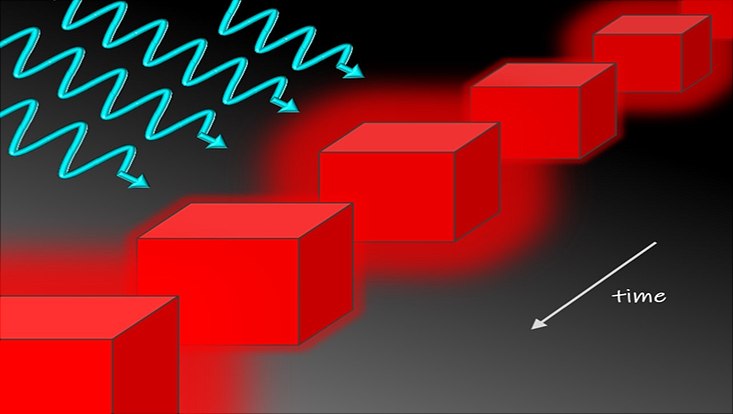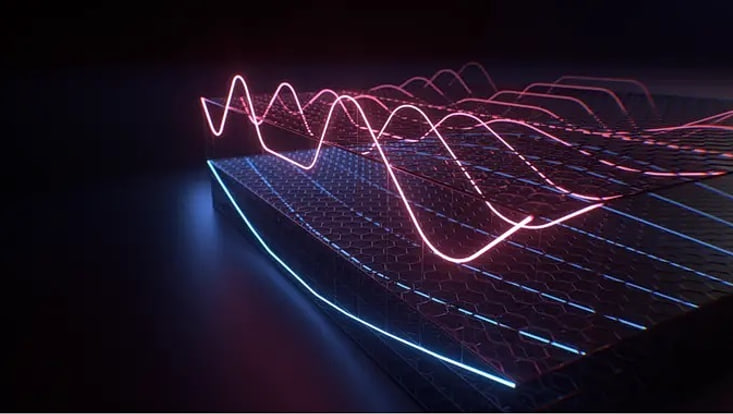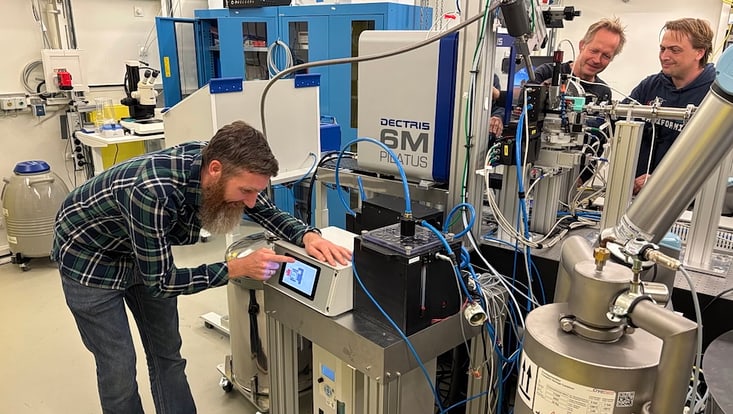Imaging of Matter
Time for a new state of matter in high-temperature superconductors
17 November 2020

Photo: Mathey group
Scientists at Universität Hamburg open up a new direction of material design. The research group led by Prof. Ludwig Mathey from the Institute of Laser Physics and the Cluster of Excellence "CUI: Advanced Imaging of Matter" uses light to bring superconducting materials into a time-crystalline state. The aim is to develop a new, dynamic strategy for designing quantum materials as required. The scientists report on their work in the journal Physical Review Research.
High-temperature superconductors with their frictionless electron flow at temperatures up to 100 K (-173 °C) constitute one of the most spectacular phenomena of material science. Thanks to intensive research, this phenomenon could be transferred into real systems, so that today you can even buy a piece of a high-temperature superconductor.
Superconductors are crystals in which the individual atoms form a very regular, spatial structure. The concept can be explained with the help of a bucket filled with water: If the water is liquid, the water molecules can be anywhere inside the bucket. In this sense, every point within the bucket is equivalent. However, as soon as the water freezes to ice crystals, the water molecules occupy well-defined positions in space.
Shining a laser on the high-temparature superconductor
Time crystals have so far only been realized in artificial model systems. The researchers therefore wanted to find out whether it is possible for crystals to form not only in space but also in time. “In our work we propose to turn a high-temperature superconductor into a time crystal by shining a laser on it,” says first author Guido Homann. The defining feature of a time crystal is that a macroscopic observable, such as the electric current in a solid, oscillates at a frequency that is smaller than the driving frequency.
“The frequency of the laser needs to be tuned to the sum resonance of two fundamental excitations of the material,” Homann explains the approach of the research group. One of these excitations is the elusive Higgs mode, which is conceptually related to the Higgs boson in particle physics. The other excitation is the plasma mode, corresponding to an oscillatory motion of electron pairs, which are responsible for superconductivity.
The creation of a time crystall establishes the dynamical phase
“The creation of a time crystal in a high-temperature superconductor is an important step because it establishes this genuine dynamical phase of matter in the domain of solid-state physics,” Co-author Dr. Jayson Cosme says. Group leader Prof. Ludwig Mathey emphasizes that controlling solids by light is not only fascinating from a scientific perspective but also technologically relevant. “The ultimate goal of our research is to design quantum materials on demand.”
Citation:
G. Homann, J. G. Cosme, and L. Mathey
"Higgs time crystal in a high-Tc superconductor"
Phys. Rev. Res. 2, 043214 (2020)


